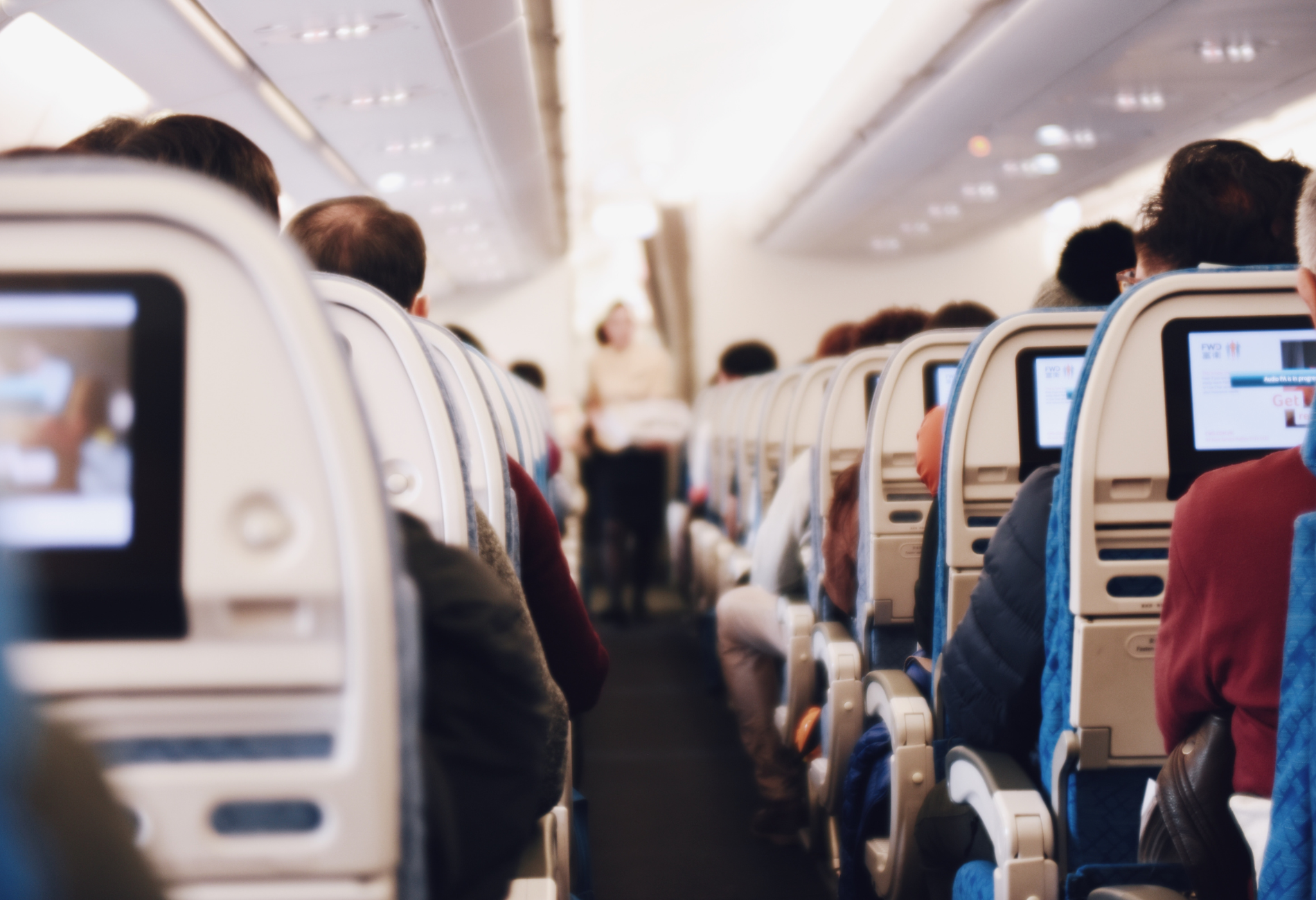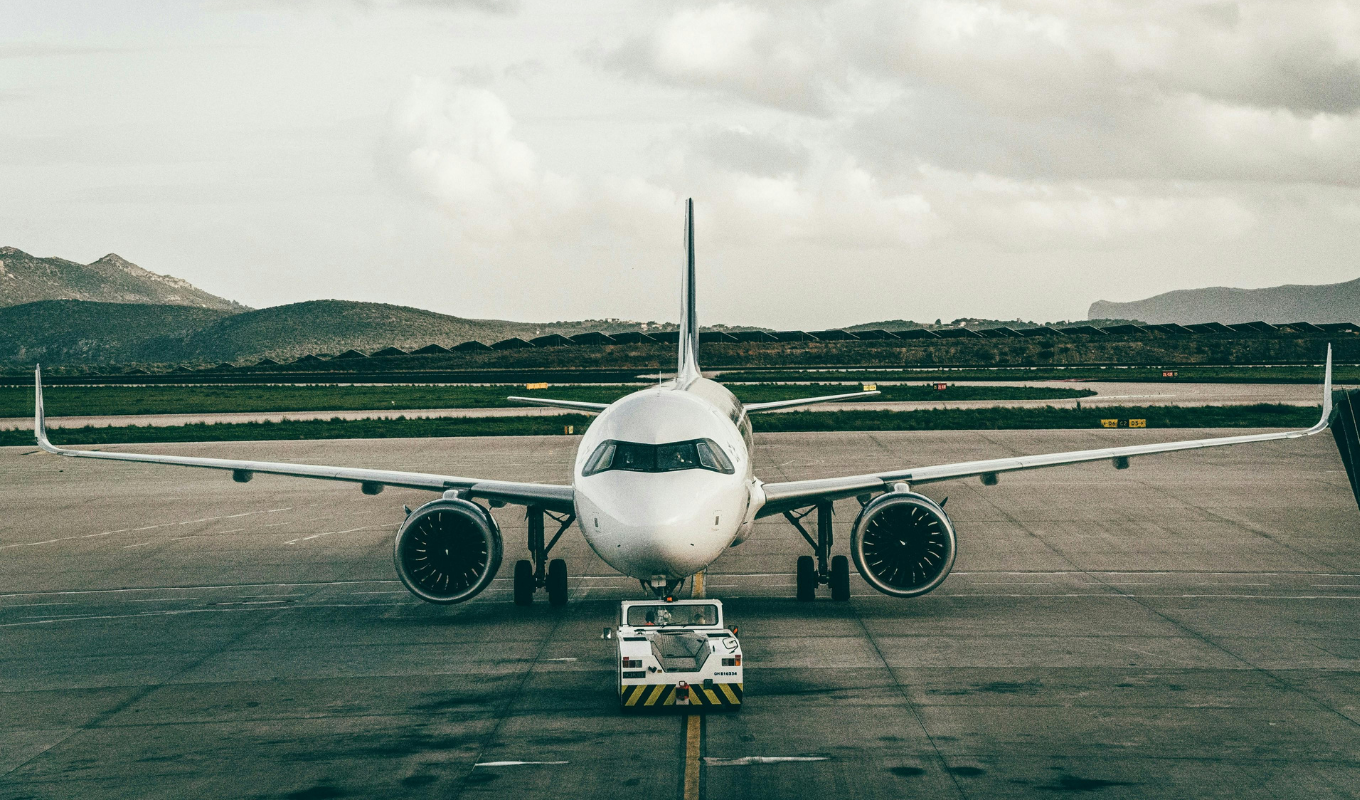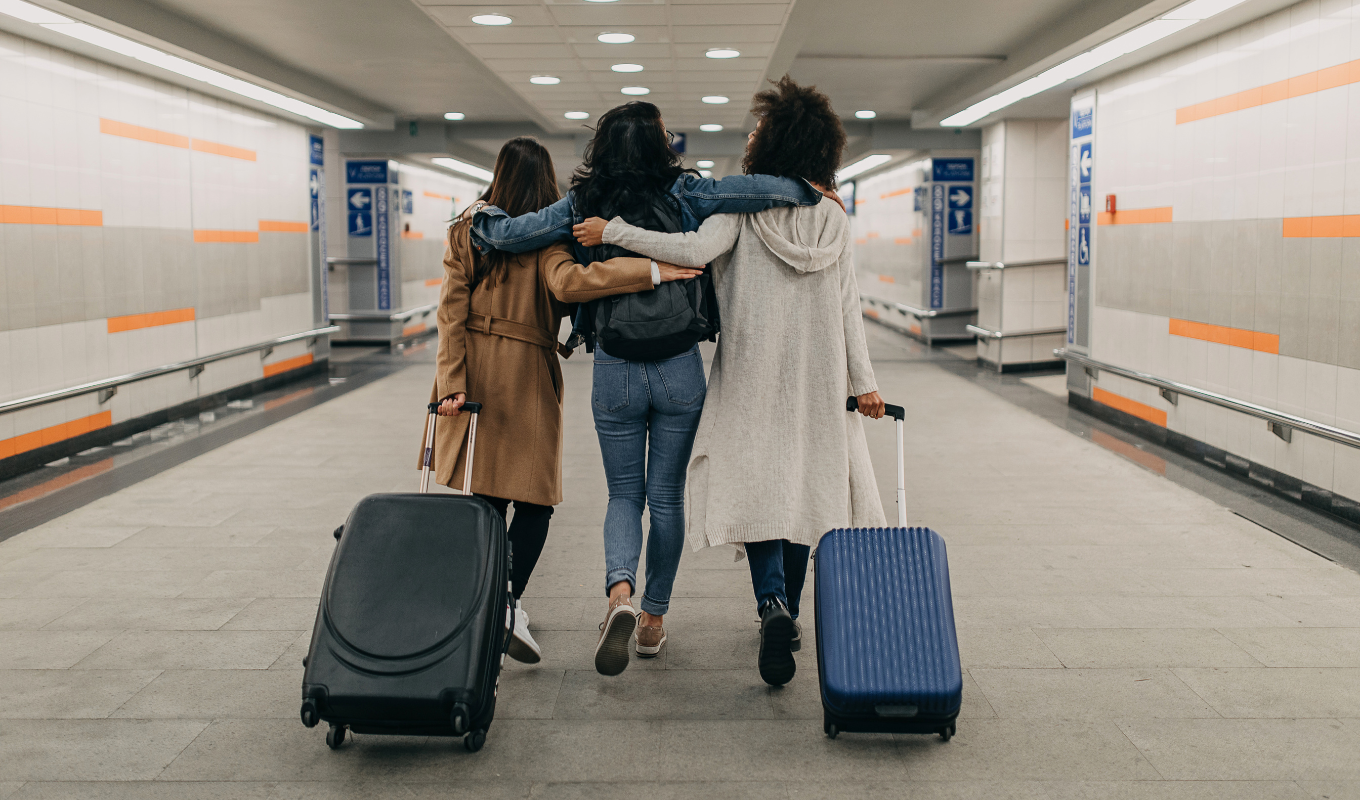It’s the stuff of nightmares—you sit down in your seat, ready to fall asleep on a long flight, and close your eyes and what do you hear? The hum of the engine, the bathroom doors slamming shut every three minutes, and flight attendants chatting in the galleys as they prepare beverage and snack orders.
Noise can ruin a flight and start a trip on the wrong foot but did you know that some seats are noisier than others? Don’t let yourself fall victim to a bad airplane seat. Protect your peace and patience and use our guide to figure out which seat is the least noisy on an airplane.
Read also: How to Make the Most of a Long Layover
Which seat is the most noisy on an airplane?
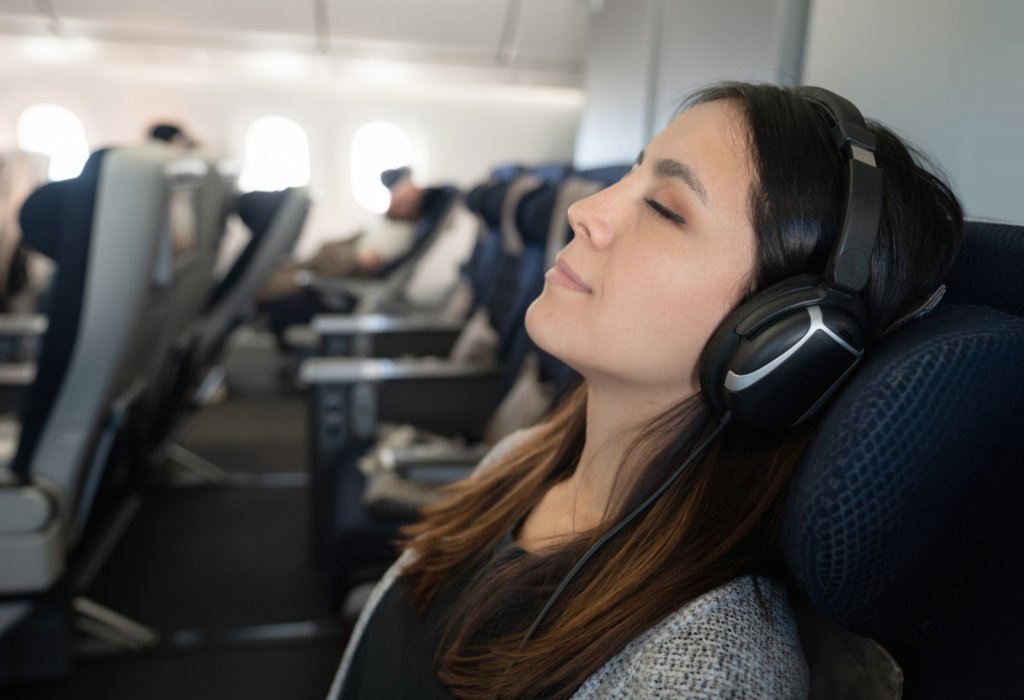
To figure out which seats are the least noisy, let’s first address which seats are the most noisy. It should come as no surprise that the noisiest seats are the ones closest to the bathrooms and galleys.
On wide-body aircraft, that includes the first couple rows in the first class cabin section, near the cockpit, as well as the middle galley, located in the middle of the plane between the cabins or near the transition between classes, and the aft galley, which is located at the back of the plane, which supports the rear economy section and is used for food preparation, beverage service, and in-flight operations.
On narrow-body aircraft, which are typically smaller with a single aisle, the bathrooms and galleys are found near the cockpit and the aft of the plane.
The rear section of an aircraft is especially noisy. In addition to foot traffic to the bathrooms and the activity around the flight attendants’ galley, it can feel noticeably bumpier and louder due to its distance from the wings and the greater flexing of the plane’s structure.
Which seat is the least noisy on an airplane?
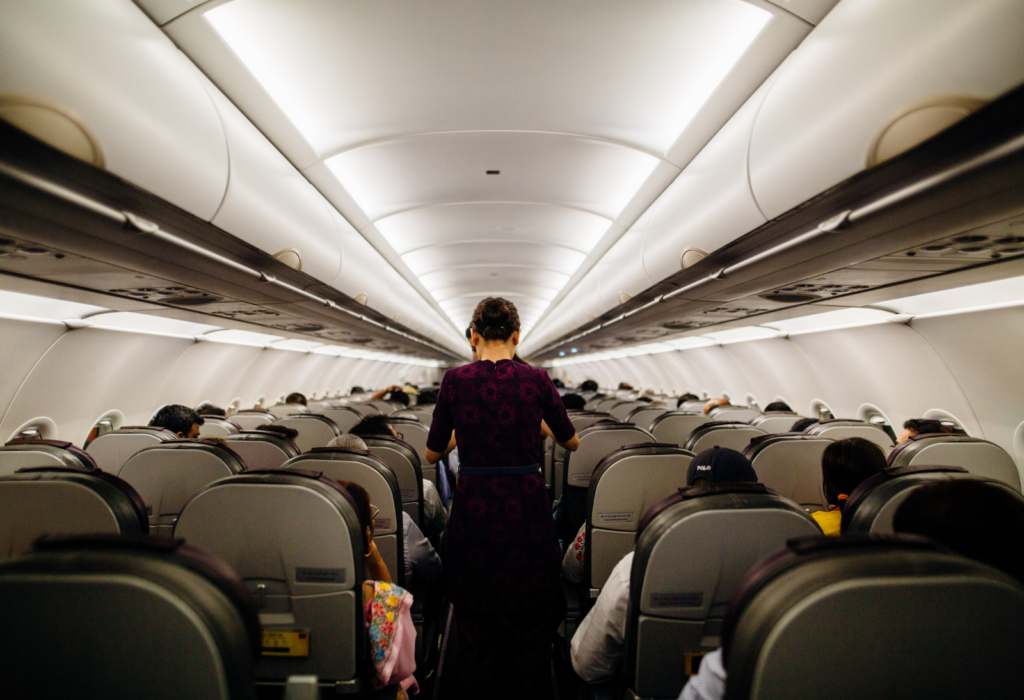
Generally, the least noisy seats on an airplane are anything in front of the wing.
The loudest row is right behind the wing because it’s where the engine is, so just try to get a seat as close to the front as possible or the middle section of the plane. Engine noise is pushed backward, so as long as you’re sitting in front of the wing, your flying experience will be much quieter than in the back sections.
On larger planes, choosing a seat on the left or right side can make a difference, as the side facing away from the jet engines may be quieter. However, the difference is usually minimal.
As for the ever-lasting window vs. aisle debate, there’s not much of a difference. Aisles might be slightly less noisy than a window because you won’t hear the hum of the engine or reverberation off the plane walls, but aisles have a lot more foot traffic. So, pick your own adventure there.
A few more tips
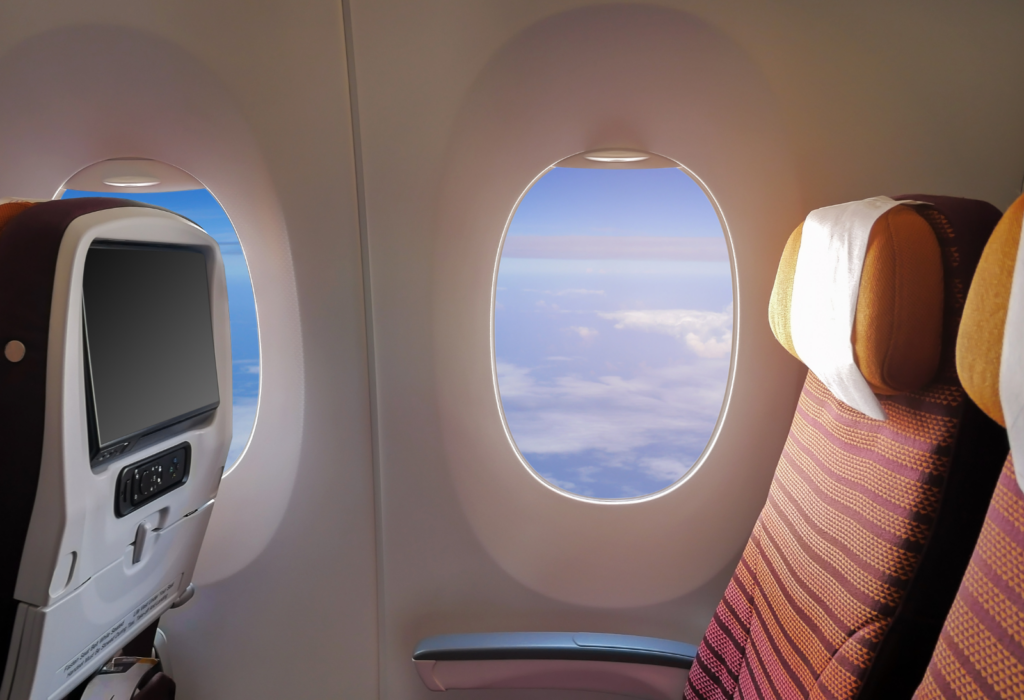
Pack noise-cancelling headphones or ask the crew if they have earplugs. It’ll reduce the hum even if you have nothing playing in your headphones and provide just a little bit more noise reduction.
If you are going to listen to something, listen to calming music or download a podcast or audiobook that is specifically made for relaxation. There are so many out there now, and thank goodness for that.
Pack a sleep mask. Reducing light pollution and other distractions can also get you in a better zone. Less distraction = more rest for you and it’s a good signal to a talkative seatmate that you aren’t in the mood to chit-chat.
Always put your name in for an upgrade when you can. If there’s any chance you can score a better seat, it’ll be in the prime quiet noise area by the front of the plane.
Last but not least, remember that the best seat on a plane isn’t the same for everyone. If extra legroom is more important to you than noise reduction, ask to sit in the exit row. Prioritize what you want out of a seat.

